






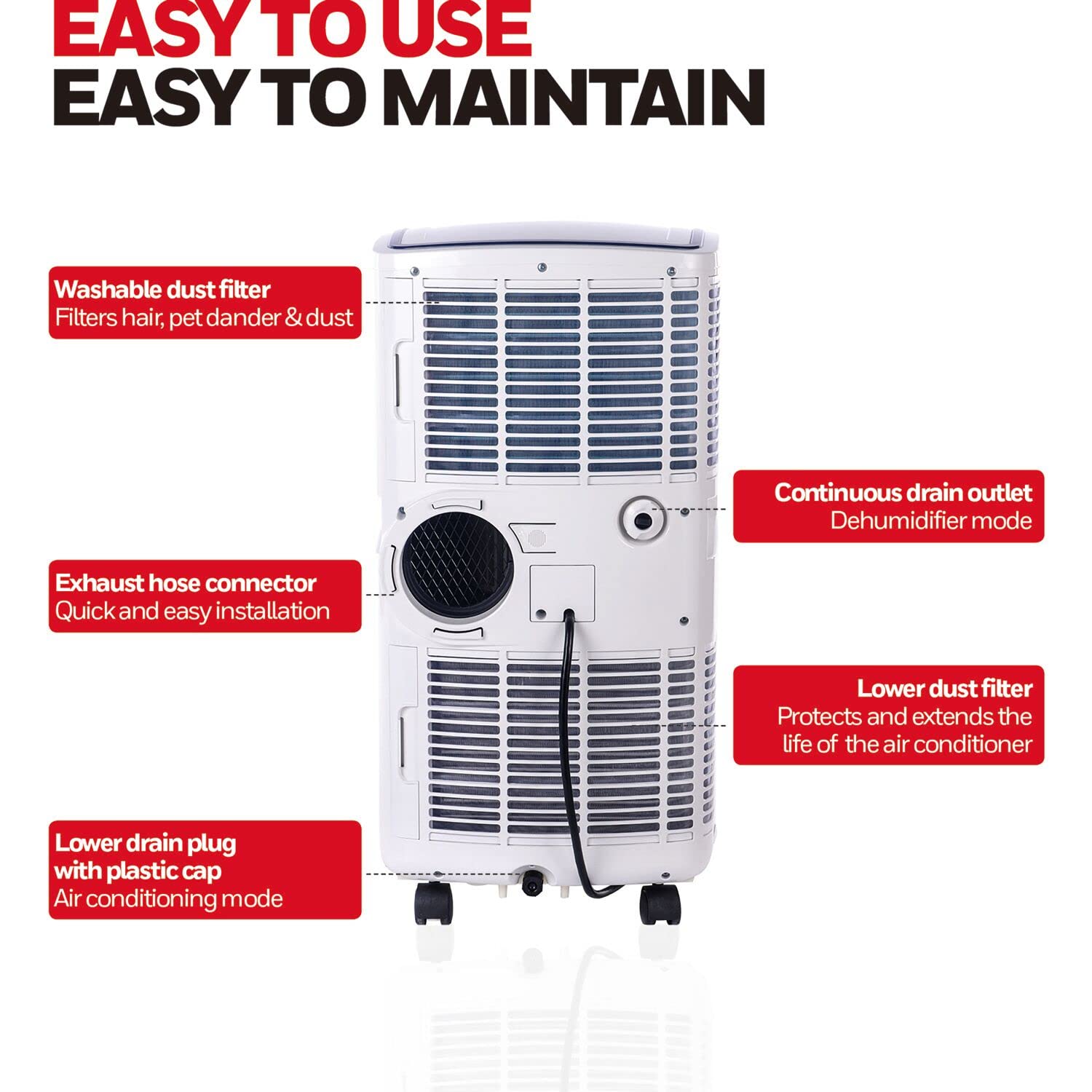
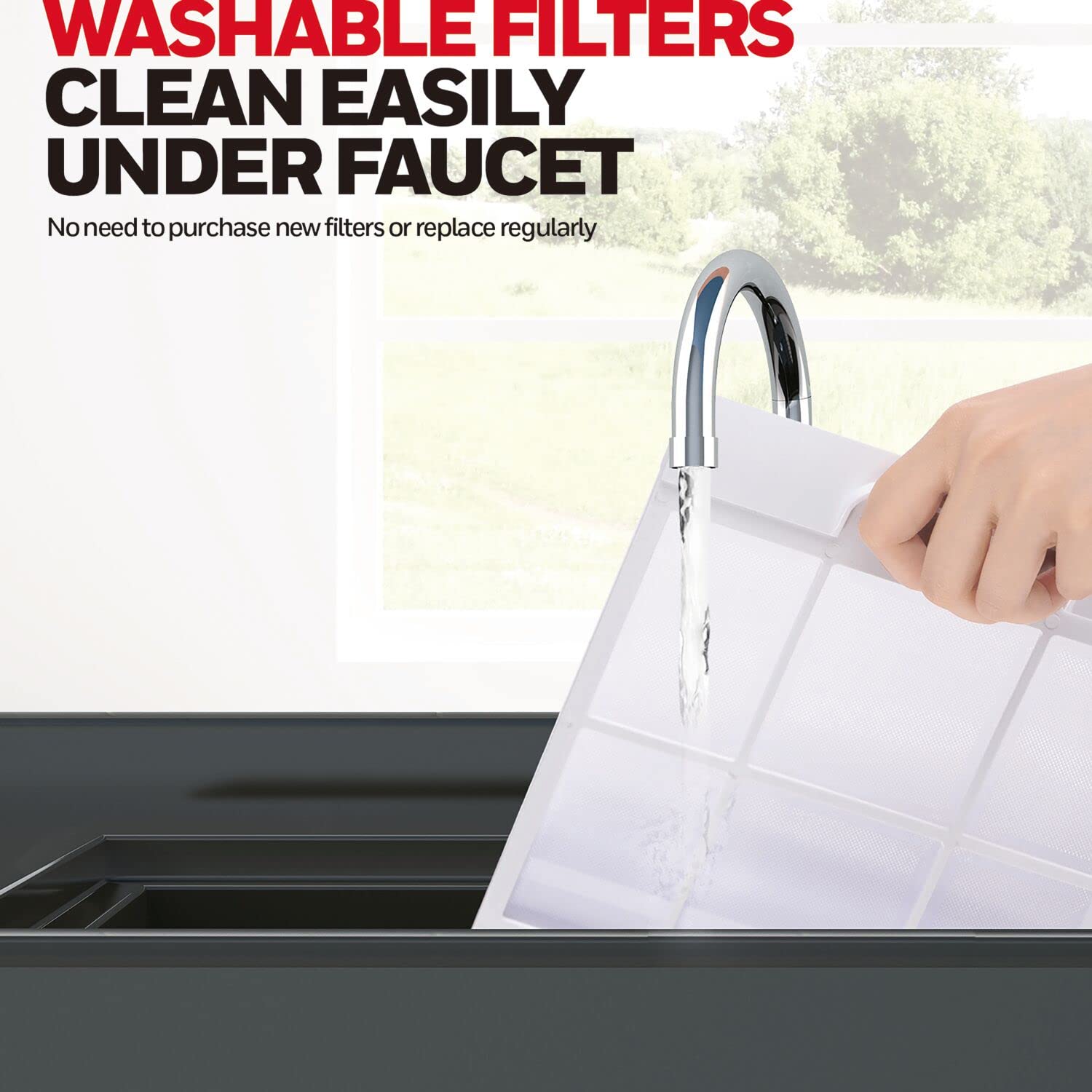
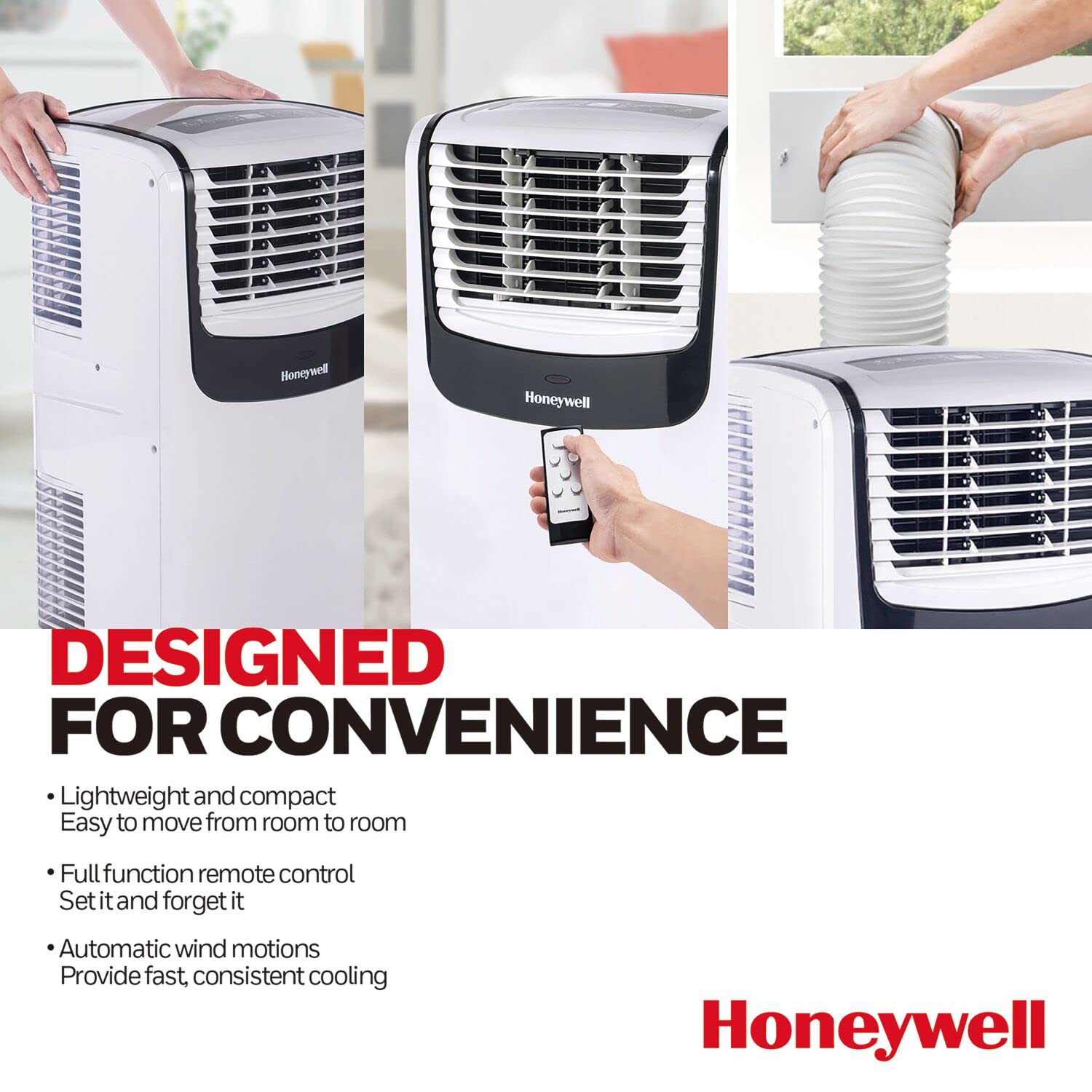

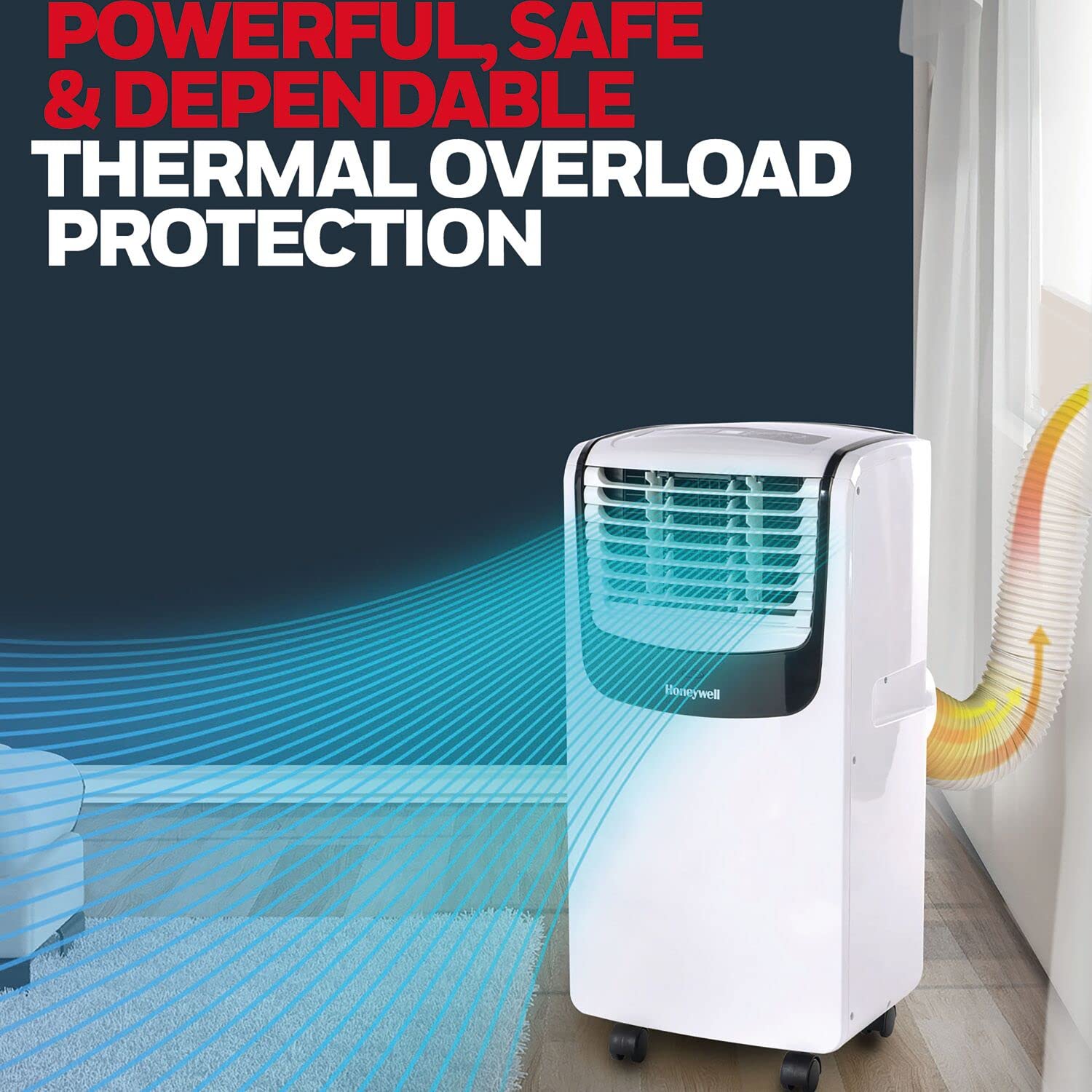


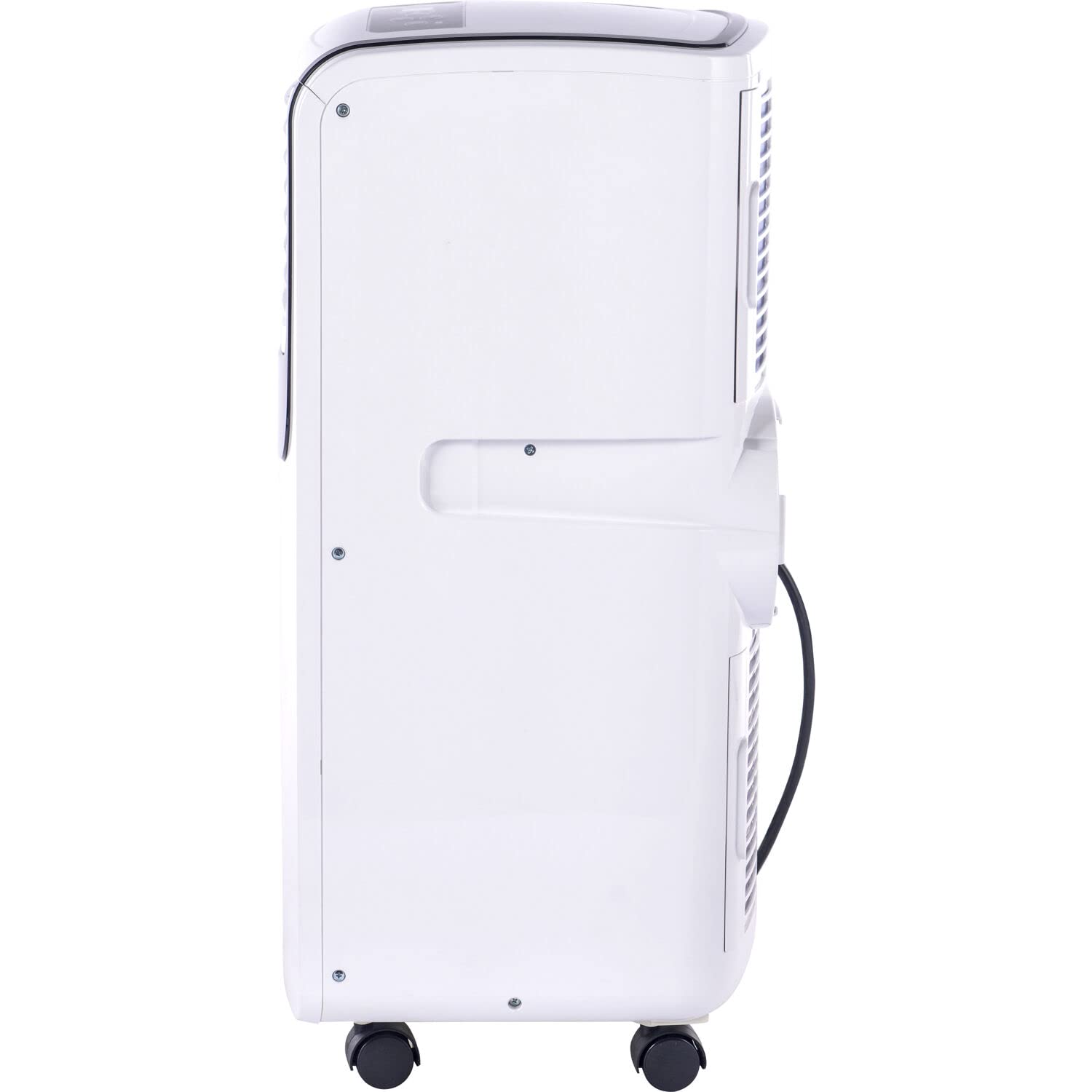
🌬️ Chill Out in Style!
The Honeywell 10,000 BTU Portable Air Conditioner is designed for efficient cooling in spaces up to 450 sq. ft. It features a 3-in-1 functionality that includes cooling, fan, and dehumidifier modes, making it perfect for any room. With a 24-hour timer, remote control, and easy installation, this unit not only saves energy but also ensures a comfortable environment with added safety features.
F**G
You won't win with this one! Would give it ø stars if I could!
This portable AC could easily be the poster child for the "portable air conditioners are highly/the most inefficient air conditioning option" OR "portable air conditioners are the air conditioners of last resort" statement(s).So, this AC was meant for a room under 200 sq. ft., but, because it has some computer equipment in it which generates SOME heat (we're talking high end laptop, not server room), I got this unit for a space almost 4x the square footage of the room. So here are my observations:• Window installation kit should include foam & weather stripping because there are a LOT of gaps left when provided equipment is installed. They don't address these at all! I mean, at least note the need for this before the poor sap (customer) begins the installation process.• Plastic panels.... Well, one side is nice, solid, thick, plastic, & leaves narrow gaps.... The other side is thin, flimsy plastic that not only heats up just from the outside heat, but also leaves a total of 1/2" worth of gaps... As I noted before, the install kit includes not a darn thing to address this with. The panels warm up (as plastic will) from the ambient air outdoors (especially when installed in a sunny window) AND one side also warms up from the exhaust (making it a double whammy). Before you start installing anything, do yourself the favor of taking measurements and purchasing foam insulation -- best in sheet form so you can cut to sizes you need! AND you will need weather stripping to apply above and below the edges of the plastic panels to best deal with the gaps. The plastic, in fact, heats up so much from the outside, that it actually requires the use of thermal heat shielding on the outward facing surface AND insulation on the interior facing surface. They don't tell you that so you can have everything at the ready before you start the install project --- which is far more involved that the simple set of instructions would lead you to believe.• Note that installation will leave you with a security risk with most types of windows because there is no provision made for dealing with the fact that your window will no longer stay properly closed (much less lock).• This thing generates heat! In initial hours of operation, as is recommended for most ACs & dehumidifiers, it's best to run them on the highest fan & lowest temp. settings. Which is where I started.... Well, the back of the unit heated up like crazy -- almost too hot to keep a hand on. I stuck with it, though, since the room was already warm anyway.... After about 5hrs. of continuous operation it settled into a pattern and ran cooler --- lukewarm or so. But, it still generates heat, which compounds the warmth in the room especially with prolonged use, which means the unit has to fight itself as well as the room conditions. The very definition of inefficient!• The exhaust tube reaches surface temps. in excess of 120˙F. A Cool-Aide insulation kit is a MUST! With the kit installed, the exhaust hose surface temp. stays a bit above the room temp. Without it, there is no way this unit could cool a shoe box! Even with it, the areas where the exhaust hose connects to the unit & where it connects to the window panels are a point of heat getting released into the room you're trying to cool. Again, the very definition of inefficient! In fact, insulating the tube with a thermal/heat barrier & THEN sliding it into the Cool-Aide sleeve is your best option -- cuts the tube's radiant heat to near 0. But, no matter what you do, the exhaust tube's connection points cannot be insulated. Nowhere in the manuals or product descriptions will you see that addressed either! These machines should ALL come with insulating sleeves -- they simply will not cool a room they are sitting in without it & yet none of them come with this critical equipment.• Because of the heat the unit generates along the surfaces near & around the exhaust port (which cannot be insulated in any way), the room temp. NEVER got below 74˙F. In a small room, the unit loses the battle against the heat it generates & it simply doesn't have enough cooling power for even the room size it is rated for. Keep in mind, it wasn't able to get a ~200 sq. foot room below 74 degrees... And even that achievement came only when the unit's fan was at its lowest setting.... So what hope is there of cooling a 400 sq. ft. space?• Noise..... Much noisier than you expect upon reading the decibel ratings. Especially in small rooms. You can't hear yourself think with the fan set to "high". And it's not likely to win the battle between the heat in the room & the heat it itself generates on low.... Maybe on medium. When all that is taken into account, the unit is noisy.• Weight..... Be prepared for 10+lbs of added weight from the packing material alone. And, while it IS one of the lightest such units on the market, it's an unwieldy weight. There aren't actual handles for moving the unit as much as grooves in the design you can kind of get your fingertips into if you have "smallish" hands. I'll tell you this much, it was a pain getting it up a flight of stairs! Not because of the weight alone, but because it was hard to get a hold of the thing. I have a dehumidifier that weighs about the same as this unit that is FAR easier to move because it has handholds along the top of two sides. Without handholds, this unit is much more difficult to move than you'd expect.• Cold humidity.... That's what you get.... It started off with a room at 86˙F (thank you heat wave) at 40% humidity. It managed to get the room to 74˙F (though set to 67) at 60% humidity.... Which makes no sense for something with a built in dehumidifier & is self-evaporative too! The humidity level should have at the very least remained at 40%. So, what I am dealing with now is a cool, clammy, humid feeling room. Better than hot, humid, clammy -- which is insufferable to me & affects my health -- but definitely will not do in the long run.• Unsightly when set up as needed.... With the addition of the necessary insulation sleeve, this unit doesn't look anywhere near as neat and tidy as the product pictures would lead you to believe.• Takes up virtually as much space as a window unit with the same effect. Aside from the new U shaped window & new saddle window units on the market, these portable units' exhaust setup will take up almost as much space as a window unit for the same-sized room with the added security risk that is much more difficult to address than for a true window unit.... The plastic is too flimsy on this portable unit's exhaust setup to allow for sufficient pressure application to make the window truly secure. A true window unit is much sturdier & allows for windows to be secured in place without worry of breaking brittle plastic panels.• Moving it room to room will not be as easy as it sounds either. You have to go through the while rigamarole of dealing with the gaps with the exhaust panels every time. Not to mention finding a solution for securing the windows each time you move the unit.Any pros., you ask? Well.... It's easy enough to assemble -- consists of just attaching the hose. The controls are big, easy to read, and intuitive -- don't really need a manual to operate it. The castor wheels' design allows for easy movement of the unit even on carpet.My advise...... Window units are indeed better. More of a pain with removal for the season, but definitely not more of an effort to install (when figuring in all the material deficiencies with this unit) and they don't add any of their operating heat back into the environment they are cooling. Second to those are in-wall or through-the-wall units. Third are units that sit outside in the elements (they can be as problematic, though in different & more costly ways, as portable units in my experience). I've now had all three types & can whole heartedly agree with professional assessments of them & rank them the same way. I have a through-the-wall unit that is now 15+ years old (and about to be replaced) that, in all those years, hasn't given me even half the issues I've had with this portable unit did in just ONE day of use. No way this unit would give you that many years of consistent, trouble-free cooling as its window & through-the-wall counterparts -- probably marginally less headaches & expense than external options.I will be sending this thing back from whence it came.... And replacing it within a few days with a window unit. Don't get me wrong, I'm not advertising for window ACs.... I'd MUCH rather work with easily removable exhaust tubes and stuff, but these portable units are indeed incredibly inefficient. One tube, twin tube, the same issues which need to be addressed the same way. They are simply not worth the money, nor the hassle. And they are no more portable, in general, than fixed units simply because of their weight.In conclusion.... Count the true costs before purchasing any portable AC. Stay away from this one in general....If you took the time to read all this, God bless =) And I hope you found it worthwhile in the end.
B**N
Great for grid-down heat prep
I bought one Honeywell 10k BTU AC to use in my wife's office when her mini-split went down. It works well and it will be a permanent fixture from now on, replacing the troublesome mini-split.I kept three inexpensive 5-6k BTU window units in storage for grid-down heat prep but never actually installed them, only testing them on my generator(s) using a work table in the garage, until the above event happened and then I learned they will not fit in the channel of my vinyl windows. They were immediately sold and I bought two more of the Honeywell 10k BTU AC's as the one we're using in my wife office is working well.I won't go into a review of the actual units other than they cool well and work fine and as advertised. What I will do is pass along notes in case anyone else is looking to use them for grid-down applications. Having a couple of these and a couple of gas inverters could save your life.My house is on a 1100 amp hour battery backup which powers an AIMS split-phase 4k inverter run to a generator switch wired to run the basics in my house: lights, electronics, routers and modems and the aerobic septic pump. I keep two '2000w surge/1800w run' inverters to run 15-30 amp devices (you can parallel inverters and boost your power output) and a Champion '8750w surge/ 7000w run' inverter for large draw devices like stove, water heater, etc. I step power usage based on what is needed at the moment to save on fuel verses just cranking up a big, loud generator and burning through supplies too fast and alerting everyone within a mile. Typically we just operate off two 2000w/1800w gas inverters, paralleled if needed, as where I live in Texas our CO-OP power supply is surprising reliable...for the moment. However we are one of the top 3 growing counties and the influx of housing editions, people with their devices and electric cars is changing that reliability rapidly.Unfortunately I'm sans watt meter for this test so I cant give actual numbers from my testing today.*One 2000/1800 gas inverter will run one Honeywell 10k BTU AC without issue.*One 2000/1800 gas inverter will NOT run two AC's as the startup of the compressors will exceed the 2000w surge for too long.*If you parallel a second 2000/1800 gas inverter it will run two Honeywell 10k BTU AC's with ease, even putting both inverters into eco mode when the compressors cycle off. I can't say definitively of course since I don't know the wattage demand but with paralleled gas inverters, the AC's were not running them hard at all. I would say you have 50% load at max, with compressor startup, which should give you a nice 4-5 hours run total on the 1.1 gallons in each inverter.Of course the Champion barely knew the AC's were plugged in,, coming out of eco mode to about 50% run mode.Anyway, hope this helps someone.
Trustpilot
2 weeks ago
1 month ago